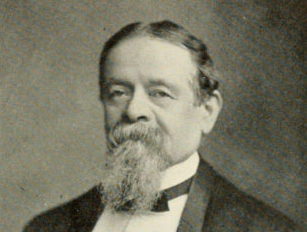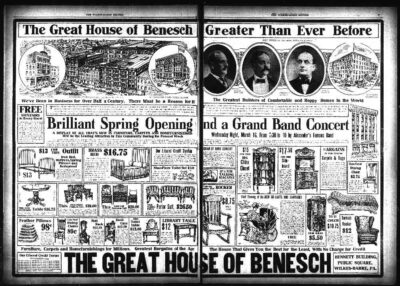History – Isaac Benesch & Sons
 In 1866, a Jewish-German carpenter leased land in the bustling business district of Old Town. Between 1868 and 1882 Isaac Benesch annexed three adjoining properties for his growing furniture emporium; the combined lots and building currently home to The Nevermore Haunt.
In 1866, a Jewish-German carpenter leased land in the bustling business district of Old Town. Between 1868 and 1882 Isaac Benesch annexed three adjoining properties for his growing furniture emporium; the combined lots and building currently home to The Nevermore Haunt.
Old Town in the late 19th Century was a diverse community, home to many Germans, Jews and Free African Americans. Isaac’s Great House thrived and was well known throughout decades of segregation for serving all groups alike. Members of the Benesch family were even active in the movement to desegregate the city.
 In 1889 two of his sons were admitted as partners. Isaac Benesch and Sons’ Great House grew to become one of the earliest and most prominent department stores in East Baltimore.
In 1889 two of his sons were admitted as partners. Isaac Benesch and Sons’ Great House grew to become one of the earliest and most prominent department stores in East Baltimore.
Throughout its history, Benesch’s store sold goods to all equally, offering credit and installment plans. An article in the 1898 Baltimore Afro American stated, “Isaac Benesch Sons very much appreciate the large volume of colored trade which they have, coming from all parts of the city.”43 In 1926, when few department stores hired African Americans as salesmen, Benesch hired Josh Mitchell to sell automobile tires—and featured him in advertisements. In the 1940s, the Afro American gave Benesch’s and other Oldtown businesses an “orchid” for “serving all alike.” In contrast, many prominent department stores on the west side—Stewart and Company, Hochschild, O’Neill’s and Hutzler Brothers—were given “onions” for discriminating against black customers.
